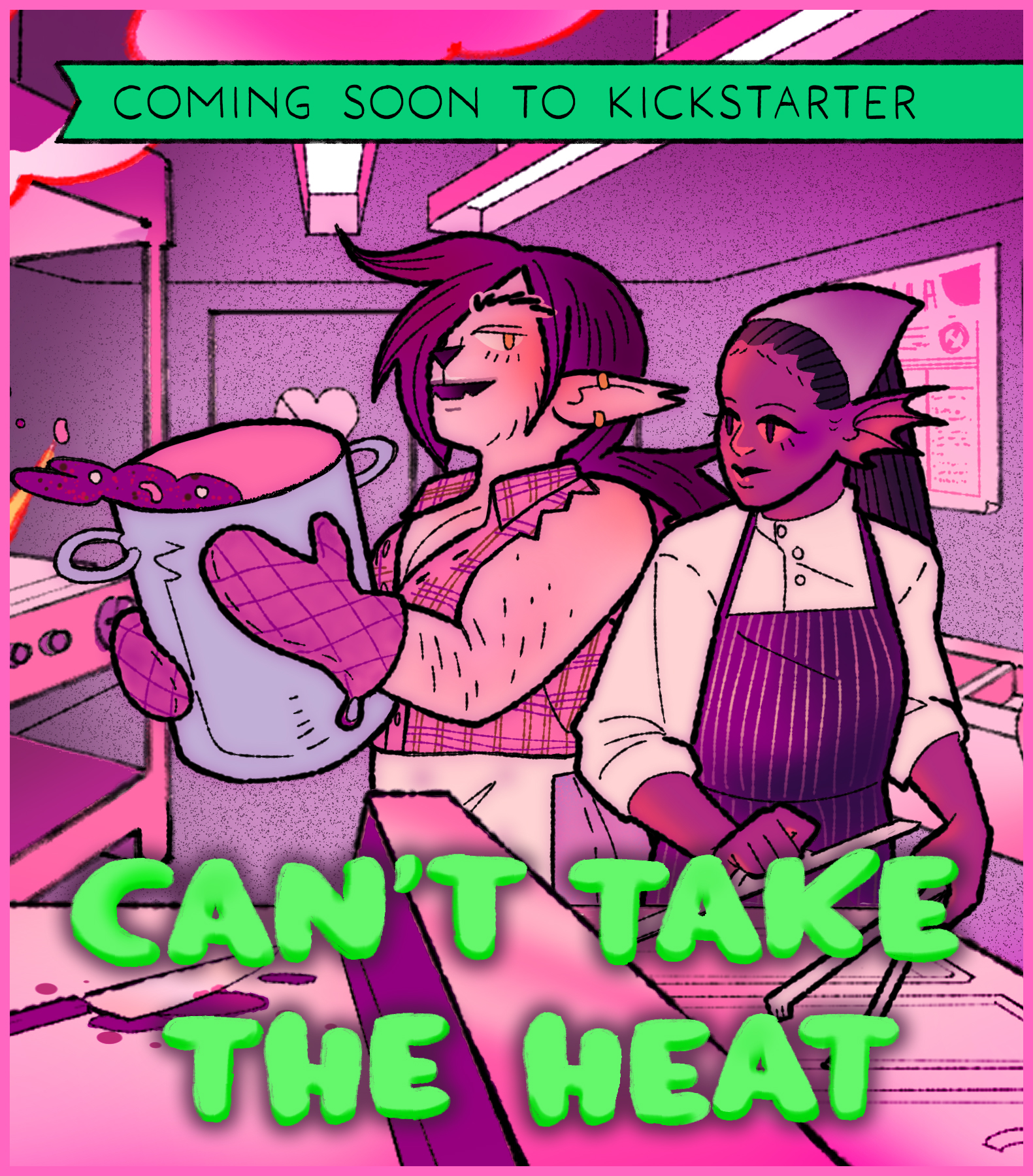Prismatic Wasteland has issued a challenge and who am I to resist such a thing?
My challenge is thus: In January 2024, come up with a new resolution mechanic for a TTRPG and give it a name. It doesn’t need to be good (in fact, most the good ones have probably already been taken). It just needs to be new! You don’t need to plan to use it in your games; it can be absolute detritus for you. But one blogger’s trash is another designer’s treasure. You never know how great an impact one throwaway idea on a blog might have.
This post is my answer to the gauntlet thrown down. Mr. Wasteland is challenging us to make a single system.
I made three.
But First, a word from not-our-sponsers
Did you know the Bloggies are currently underway? Head over now and check out the shortlist and follow the link to the most current vote happening! The bloggies are a great way to celebrate RPGs—there’s a treasure trove of amazing posts to read and new blogs to discover.
Want to win a bloggie in 2024? Start a blog today! If you want assistance setting one up, leave a comment on this post and I’ll reach out to help.
System One: Buy The Boost
For our first system today, we have Buy The Boost ! This is a simple system designed with gambling and resource depletion in mind. Here’s how it works in the most basic form:
- You have skills or attributes ranked between 0-3.
- You have a resource called Effort.
- The GM picks a difficulty between 3-12.
- Roll 1d12 and 1d6. If the d12 matches or exceeds the difficulty, you succeed.
- Spend 1 Effort to Buy The Boost : add the d6 to the result; immediately roll another boost die.
- Continue spending Effort to Buy The Boost : add the next d6 and roll again (you always know what result you’re buying).
- Ranks in skill or attributes can be used to Buy The Boost for free. These should reset with each scene or with your favorite “rest up” mechanic.
Visualization
Step One: roll the dice: 1d12 and 1d6. The d12 counts towards the target number. The d6 does not.
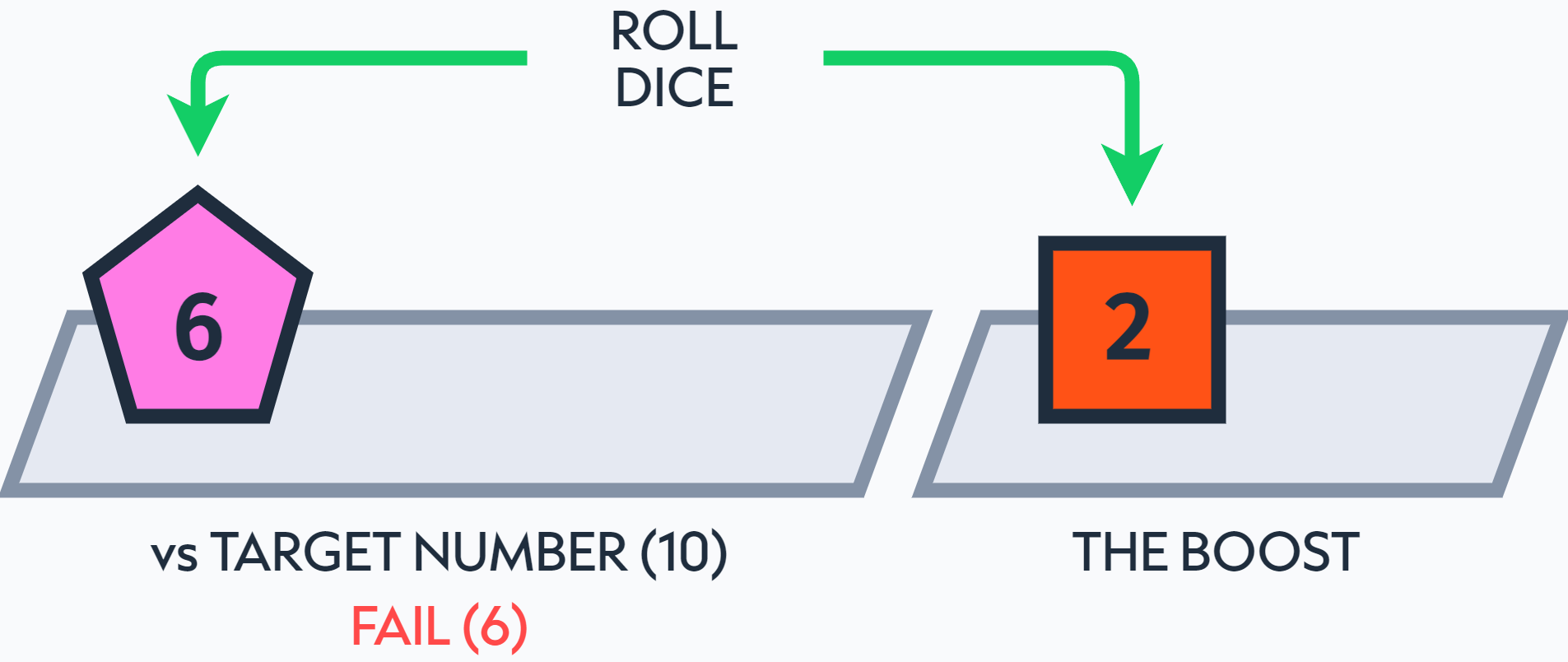
Step Two: choose if you are willing to spend effort to Buy The Boost . You know what your result against the target number will be since the die is already cast. If you choose to Buy The Boost immediately roll another d6 as the next boost die.
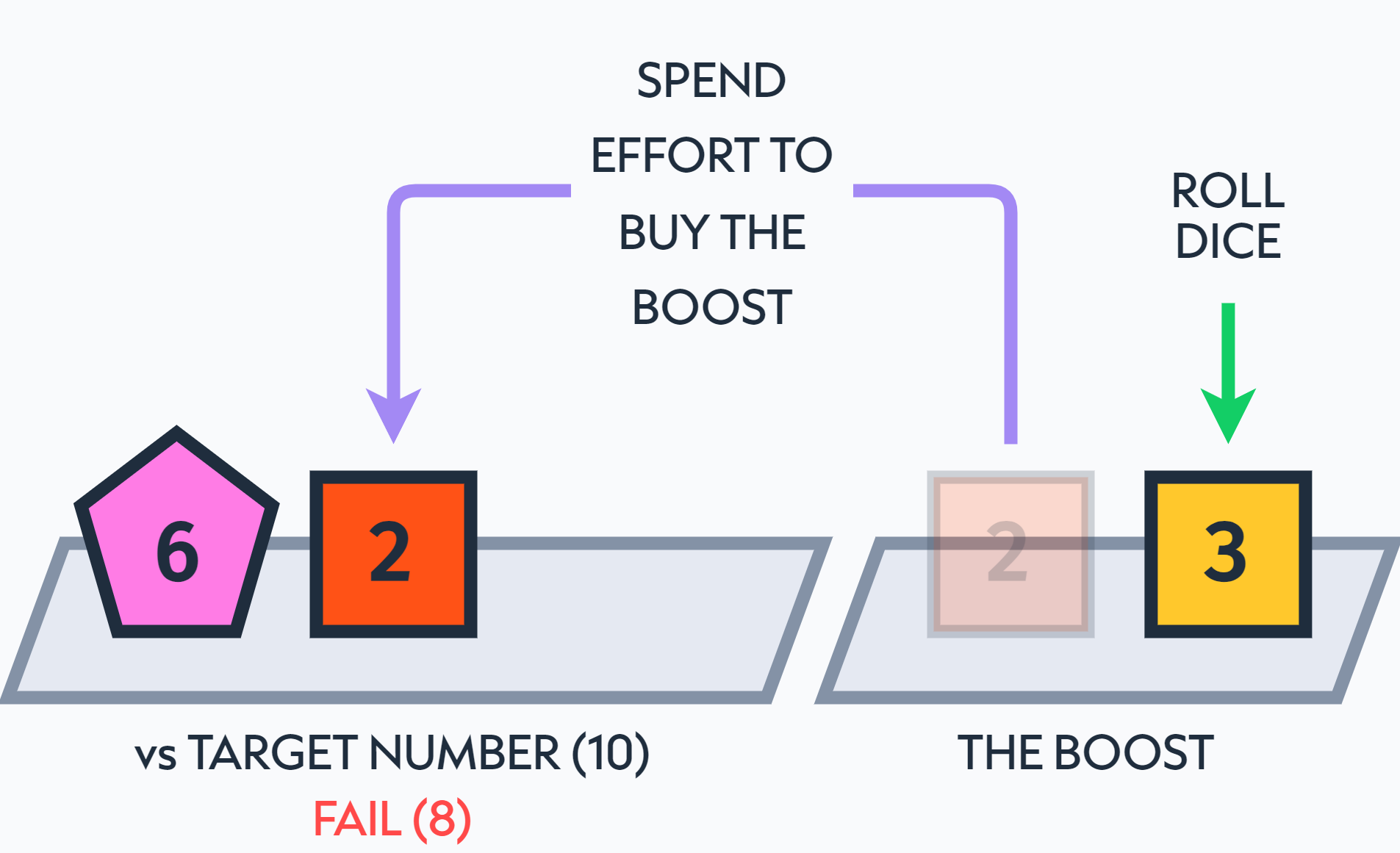
Step Three: repeat step two, making the choice if you are going to Buy The Boost of the current boost die. In this case, you know that doing so will cause you to succeed on the check. When you Buy The Boost you always roll another boost die. This could plug into your system in various ways (see below).
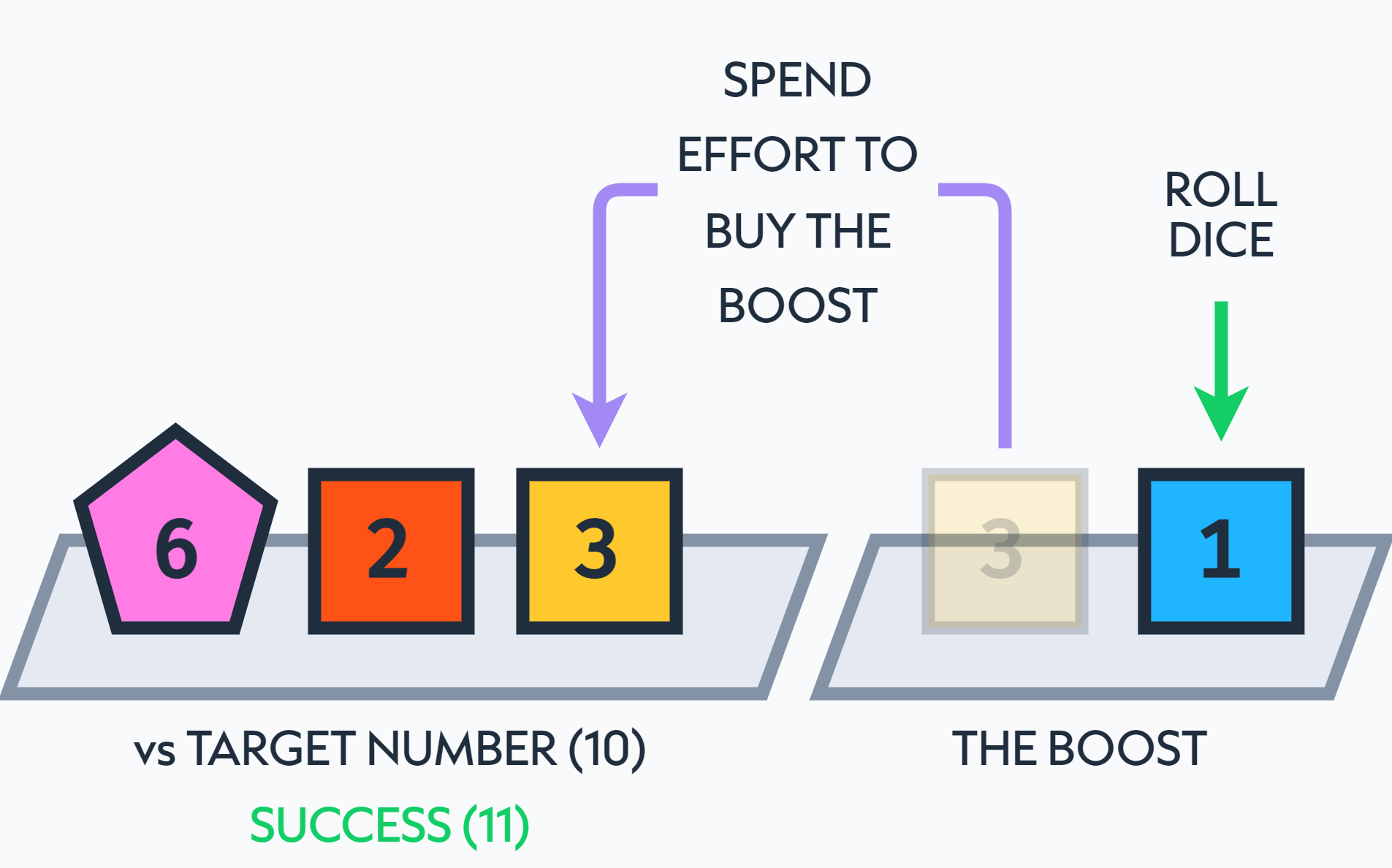
Supplements
Here’s a few things you could mess with:
- Instead of only having a single resource (Effort) you could have multiple tracks that you could spend in different situations. You might spend Exhaustion in physical situations or Panache in social ones.
- A roll of the 6 on the boost die might represent an additional advantage. Likewise, a roll of 1 might represent a setback separated from success of failure. These would only come into play if you Buy The Boost .
- Instead of attributes and skills letting you gain the boost for free, you could create feats or special abilities that do so. For example: Skilled Swordsman: in a duel, you can always Buy The Boost once for free.
And that’s it for the first new year’s resolution system!1
System Two: Left-to-Right Resolution
For the second system with have a three-variable resolution. Unfortunately, there’s no easy way to use this system online or digitally.
- Characters are simple and have something they’re good at and something they’re bad at.
- When you need to resolve a major action, pick up three dice. Choose between d6s, d8s, d10s, and d12s. You can take multiple dice of the same size.
- The two vectors that are locked in for every roll are efficacy and backlash. The flex variable is decided by conversation with the GM. A few examples are time taken, scope, collateral damage, and secrecy. The flex variable can be favorable towards you or a hinderance.
- Shake the dice in your hand and drop them on the table.
Based on the position of the dice on the table, read them from left to right.
- Left: Efficacy of your action. How well did it work? Higher is better.
- Middle: The flex variable.
- Right: Backlash. What do you suffer? Higher is worse.
- If this is something you’re good at you can swap positions of two adjacent dice. If you’re bad at it, the GM chooses the swap for you.
A Super Example
You’re playing a superhero game and want to attempt a dangerous action. The GM informs you that the middle variable will be collateral damage. You don’t want that, and you can’t take much more punishment either—you need a small backlash result. You go for a hail mary, picking up a d12 and two d6s.
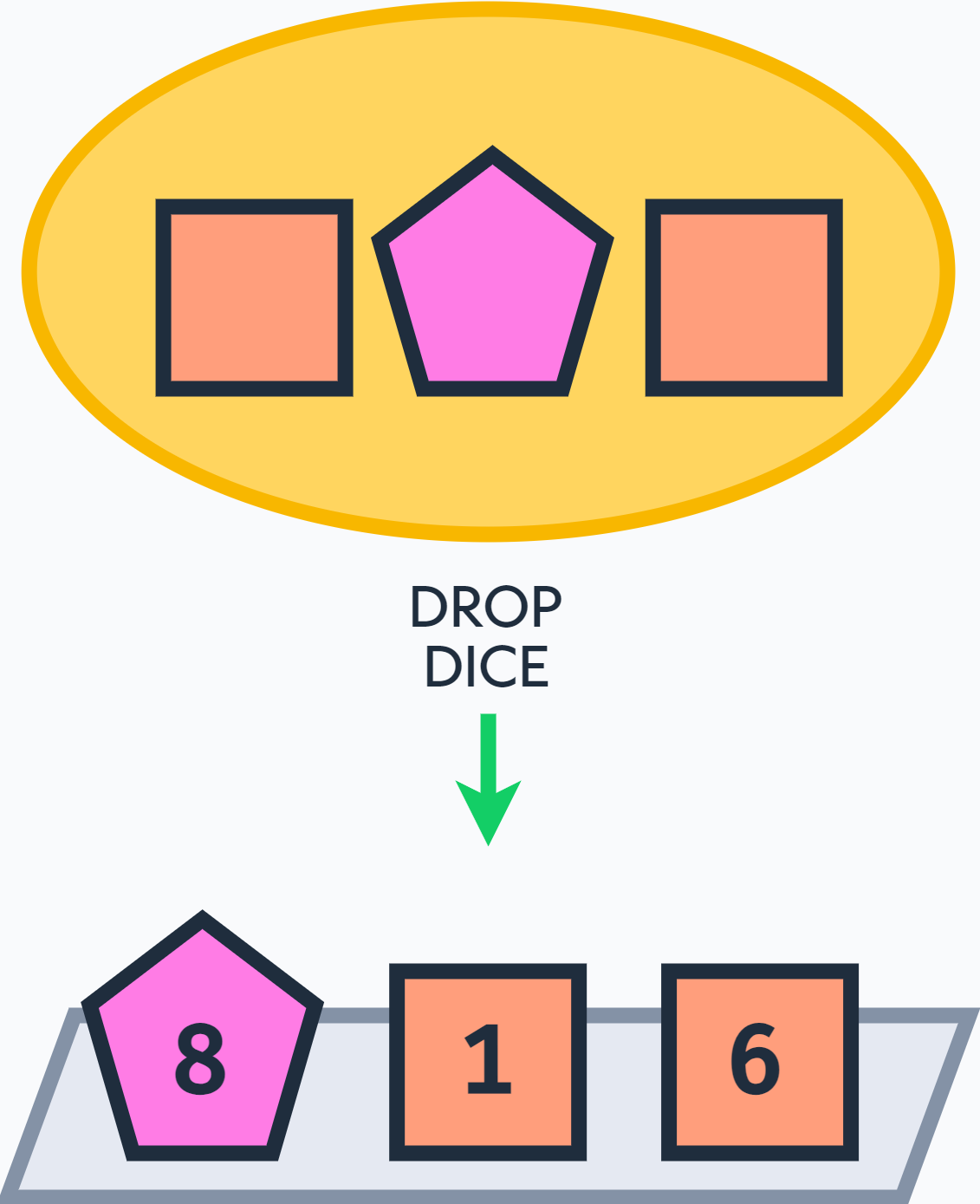
The result is good! Thankfully, the d12 landed right where you needed it: all the way to the left. An 8 on your efficacy is pretty high and a 1 on collateral damage is the best result you can hope for. A 6 on backlash isn’t terrible but it’s not great either. You live to fight on, a bit hurt.
The Super Swap
You continue on and come to another dangerous situation. You’re trying to find the center of the villain’s labyrinth before he can escape in his super-jet. The GM informs you that the middle variable will be time. If you don’t beat a 6 there, it doesn’t matter if you find the center of the labyrinth (your efficacy die)—he’ll be long gone at that point. You pick up a d12, a d10, and a d6 and drop them!
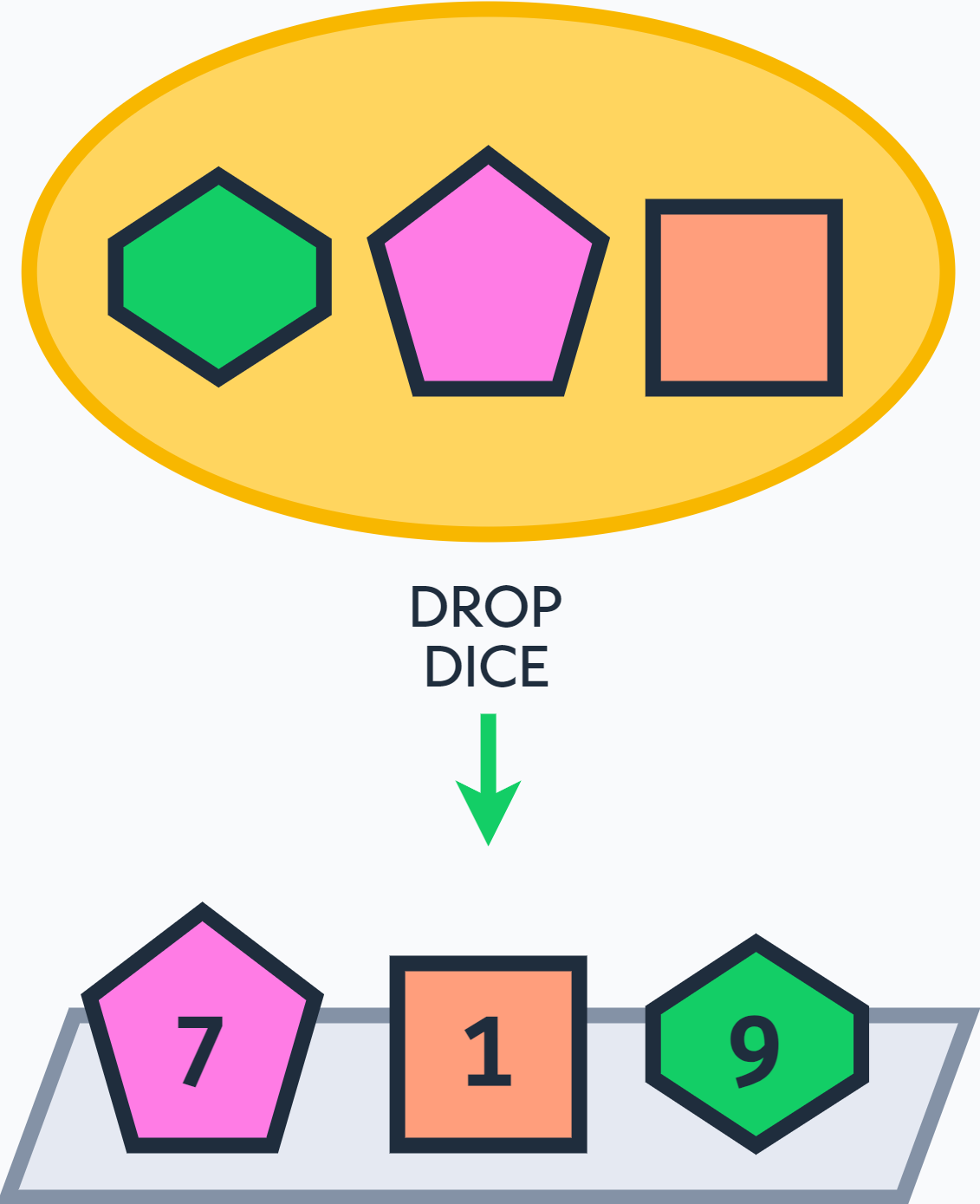
You didn’t make it… and you’re going to be suffering as the goons of this guy manage to corner you and give you a pummeling! But wait—you’ve got super speed, so you can switch two adjacent dice. Lucky you.
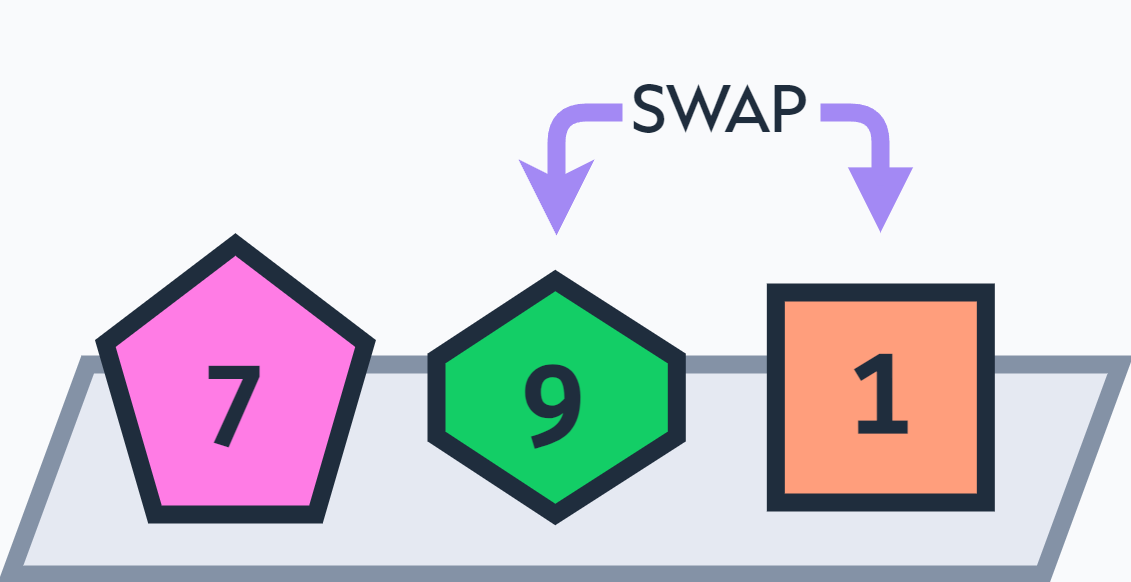
With the swap, you’ve managed it. A 7 in Efficacy gets you to the center of the lair and a 9 in the middle variable means you make it there with time to spare. A 1 on the Backlash is just the cherry on top—you don’t get hurt at all!
System Three: Green Means Go
For our last system we have a dice pool matching system. It draws a bit of inspiration from the Genesys custom dice mechanic, but that thing is honestly too much of a hassle to deal with for me.
Each player needs a handful of d6s. You’ll need and .
Characters have ranks in skills or attributes between 0-2.
To perform a check, pick up and . Add extra equal to how many ranks you have in a skill or attribute.
The GM tells you to add based on difficulty: between 0-3.
Roll the dice pool.
- If a set of only matches, that’s a full success.
- If a single or multiple match with , that’s a partial success or a success with cost.
- A matching any set cancels it out.
Let’s run through a few examples.
The Basic Roll
Two green and one yellow dice are rolled.
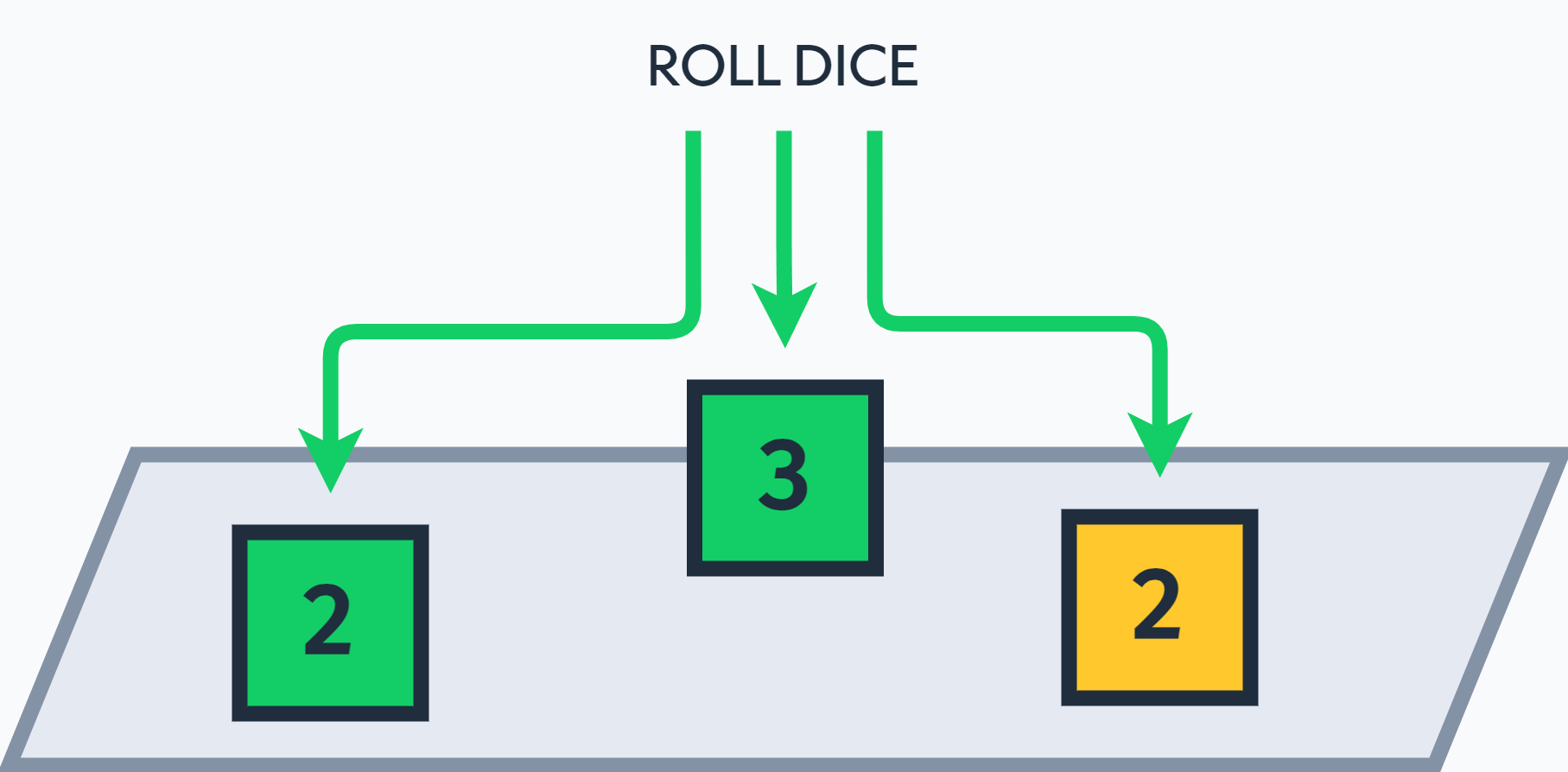
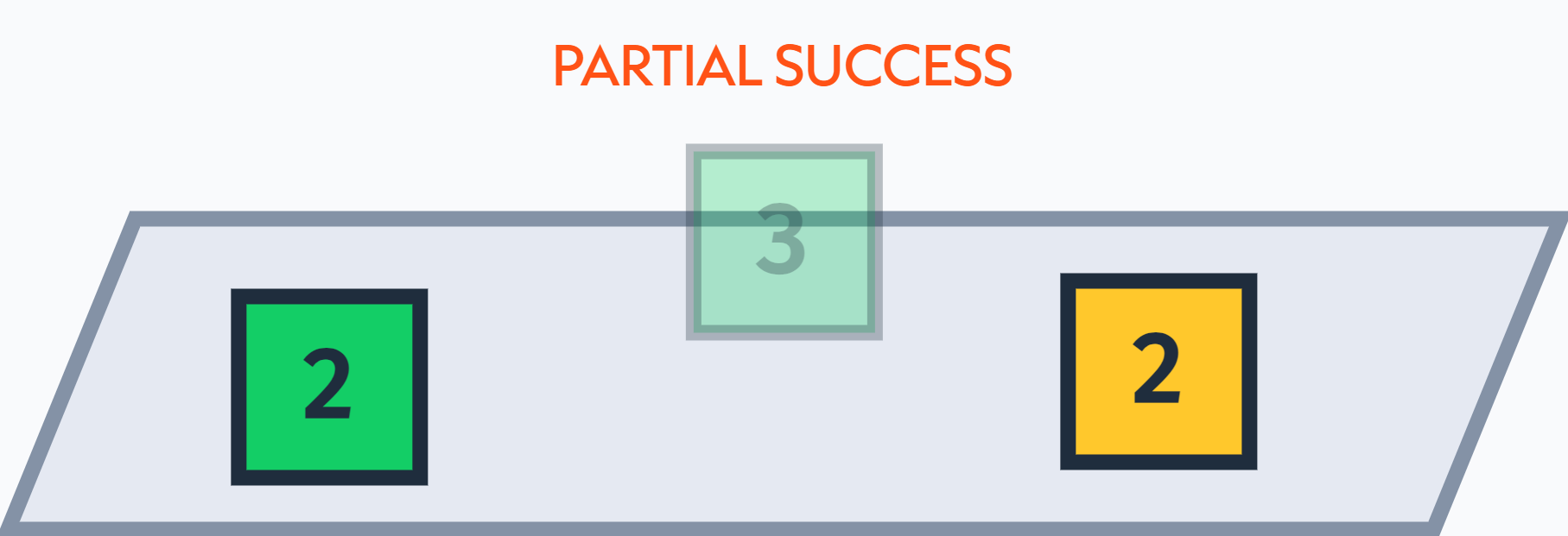
One Difficulty Dice
Two green dice and one yellow dice are the base roll. The GM adds one red die because the action is extra difficult.
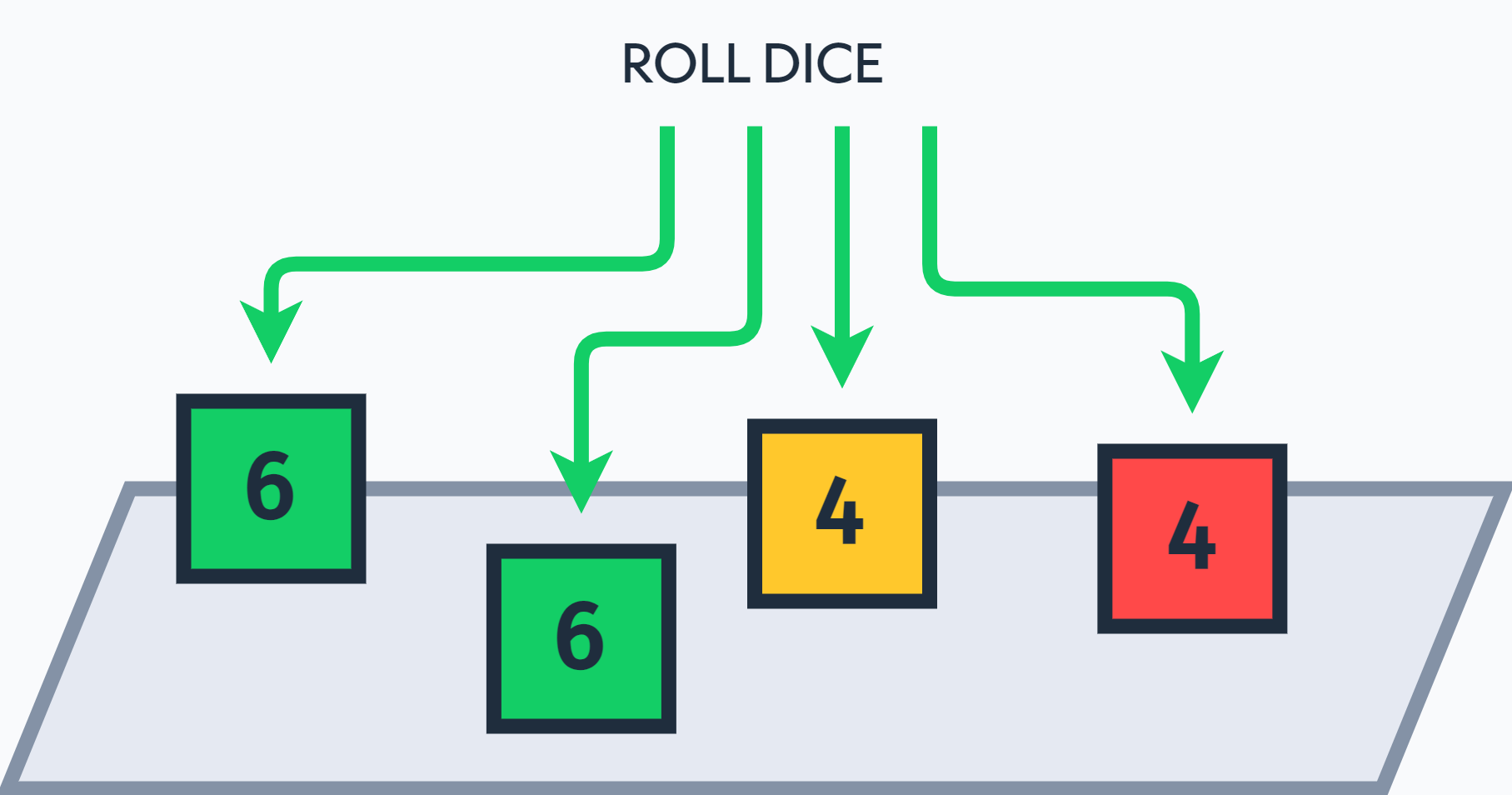
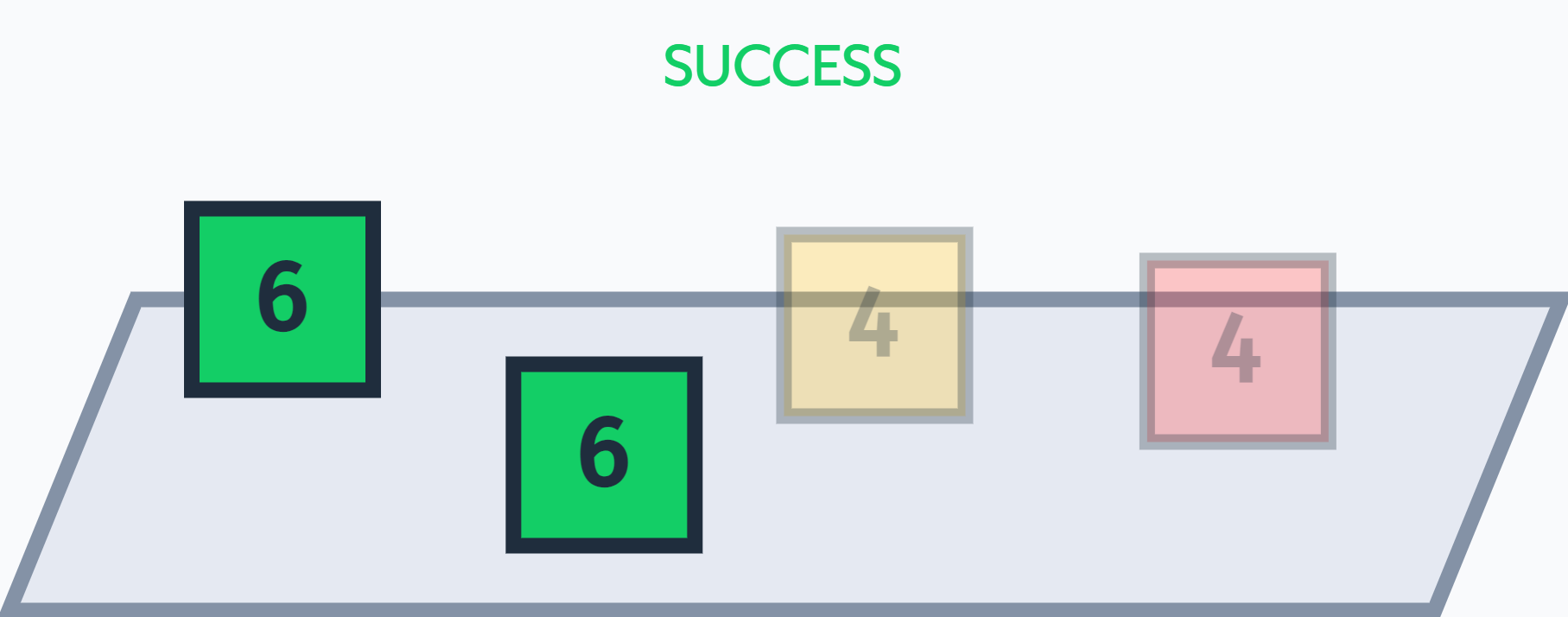
Skill and Difficulty Dice
In this example the player has a skill rank of 1, so they add one extra green dice. The action is incredibly difficult so the GM tells them to add two red dice.
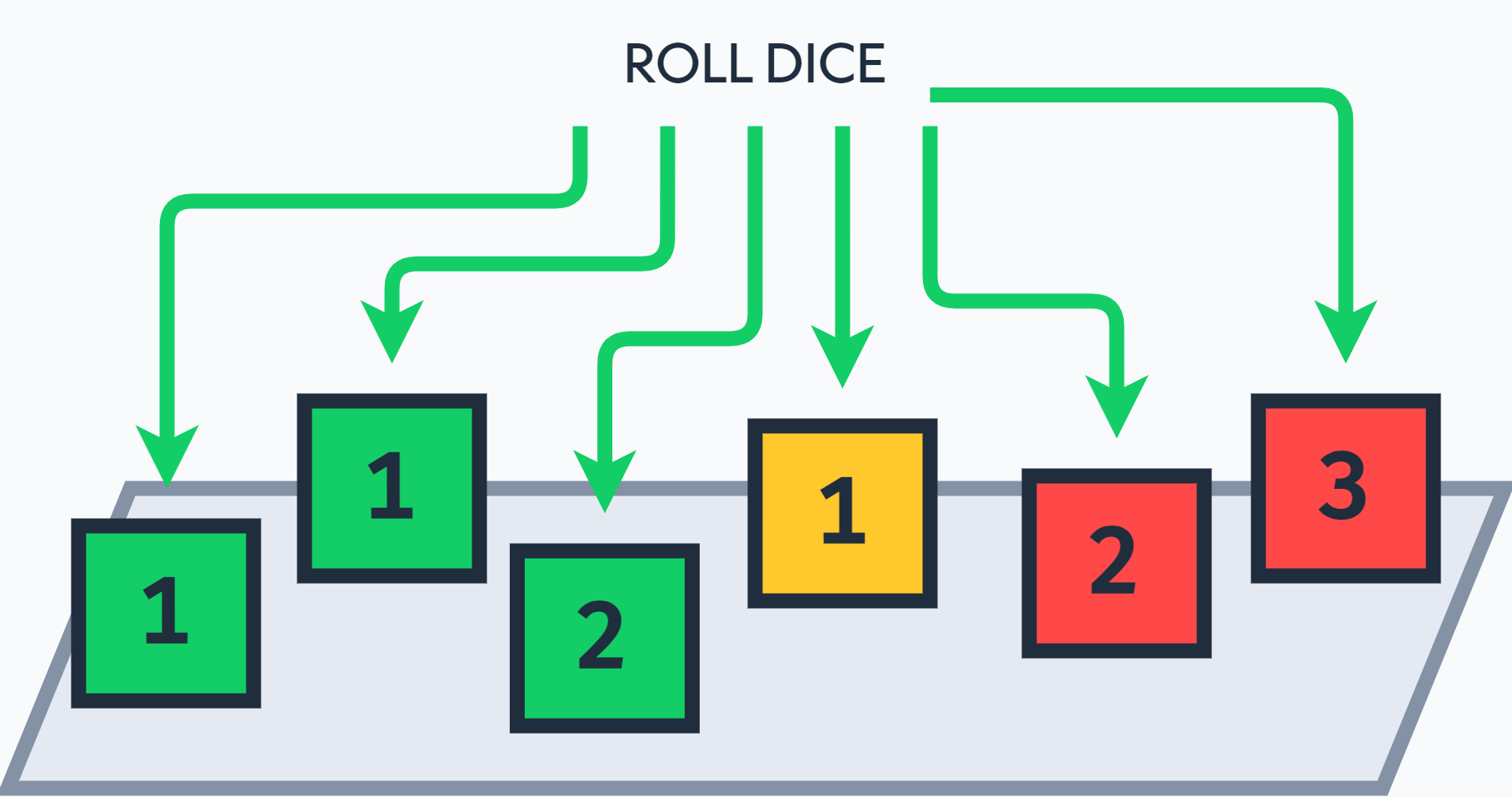
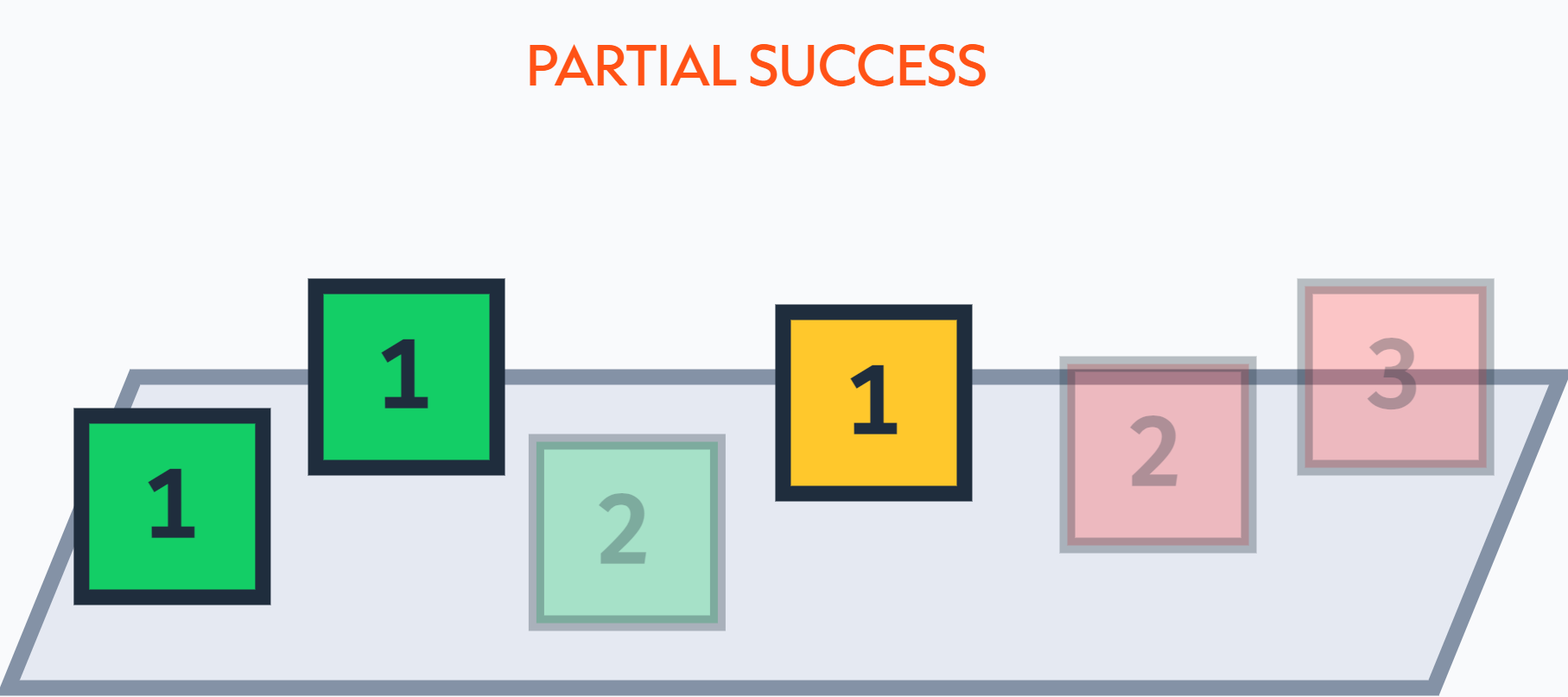
Failure Example
The same roll as above is made, but this time one of the difficult dice matches a set.
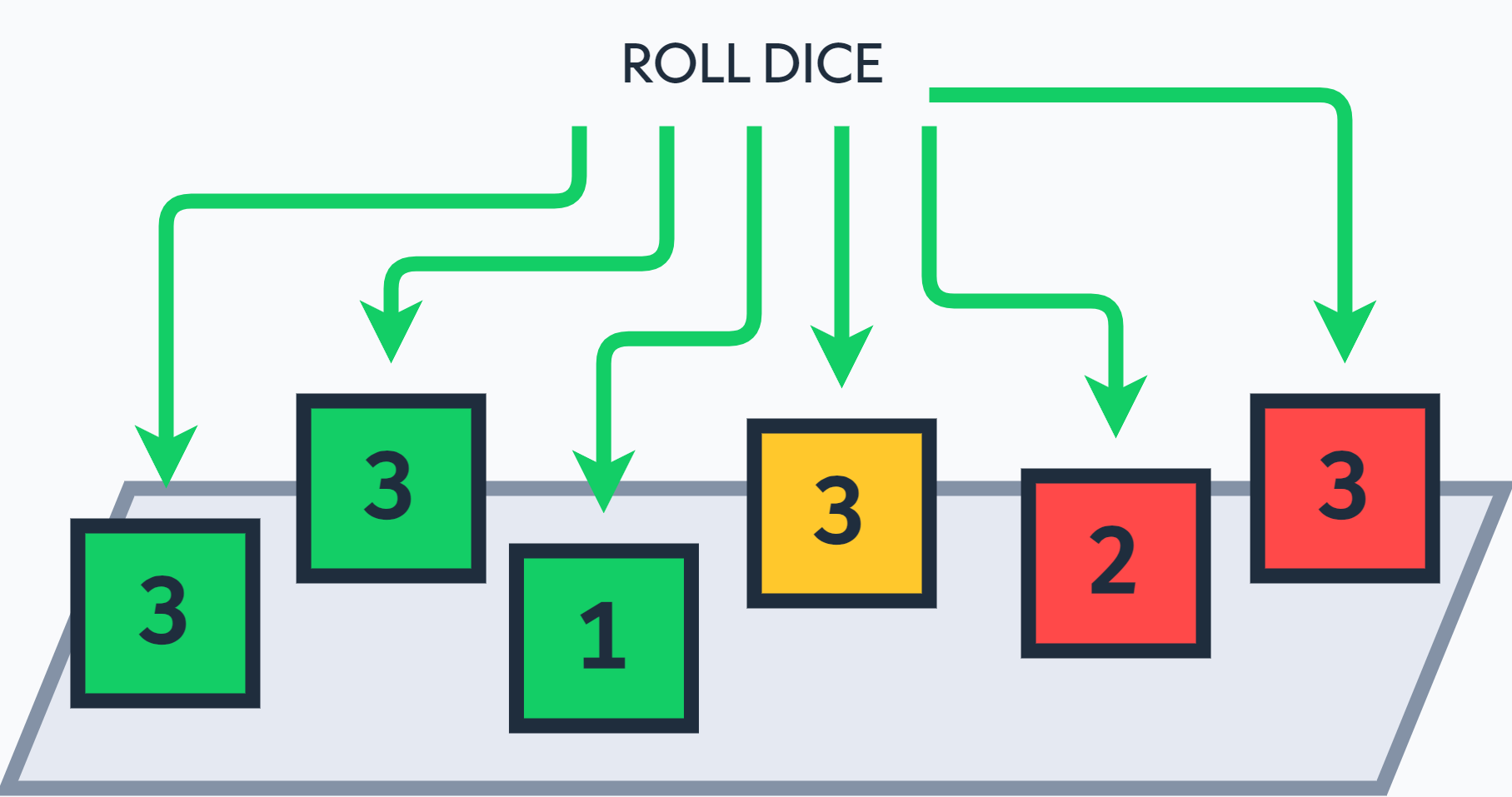
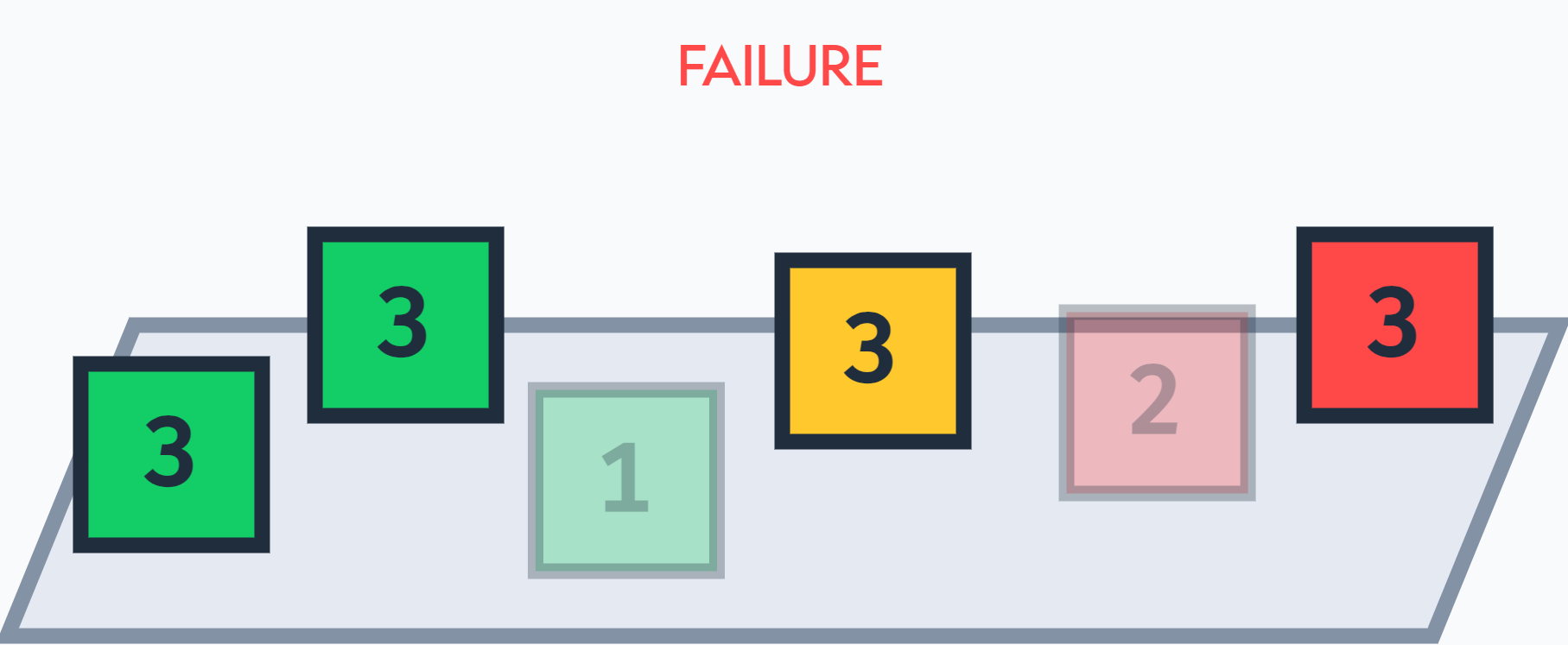
The system is not actually trademarked. Don’t get mad at me. I’m just a silly little guy.↩︎

Did you enjoy this post? Consider signing up to the mindstorm, my semi-regular newsletter!
